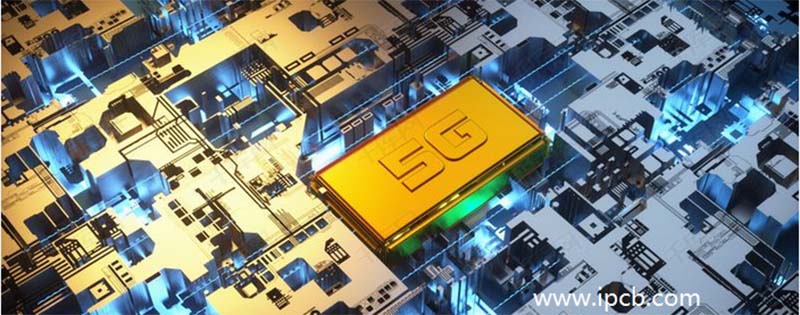The laminates industry is located in the middle of the whole PCB industry chain, providing raw pcb materials for PCB product.Copper Clad Laminate (CCL) is a board material, which is made by drying, cutting and laminating electronic glass fibre cloth or other reinforcing materials with resin binder, and then laminating it with copper foil on one or both sides, and then hot pressing it.s. It is mainly used in the production of printed circuit boards (PCBs), and plays the role of interconnection, insulation and support for PCBs. In the upstream of the industry chain, the upstream is electrolytic copper foil, wood pulp paper, glass fibre cloth, resin and other raw materials, the downstream is PCB products, the end-user industries are aerospace, automotive, home appliances, communications, computers and so on.

The initial commercialisation of 5g is in 19 years. The upstream raw materials of high-frequency laminates and other core materials are basically similar to traditional laminates. Downstream PCB manufacturers produce high-frequency circuit boards suitable for high-frequency environments, which are applied to base station antenna modules, amplifier modules and other equipment components, and are ultimately widely used in high-frequency communication fields such as communication base stations (antennas, amplifiers), low-noise amplifiers, filters and so on) automotive auxiliary systems, aerospace technology, satellite communications, satellite television, military radar and other high-frequency communication fields.
5G high-frequency technology puts forward higher requirements for circuits. RF circuits with operating frequency above 1GHz are generally called high frequency circuits. In the process of mobile communication from 2G to 3G and 4G, the communication frequency band has developed from 800MHz to 2.5GHz, and the communication frequency band will be further increased in the 5G era, and PCB boards will be equipped with antenna oscillators, filters, and other devices in the 5G radio frequency. According to the requirements of MIIT, it is expected that early 5G deployments will use the 3.5GHz band, while the 4G band will mainly be around 2GHz. electromagnetic waves with a wavelength of 1-10mm in the 30-300GHz band are usually considered millimetre waves.
When 5G is commercially available on a large scale, millimetre wave technology guarantees better performance: extremely wide bandwidth, up to 1GHz of available spectrum in the 28GHz band, and up to 2GHz of available signal bandwidth for each channel in the 60GHz band; high resolution of the corresponding antenna, good interference immunity, and miniaturisation; and fast fading of the propagation in the atmosphere, which allows for close-range and secure communications.
In order to meet the high-frequency and high-speed requirements, as well as to cope with the problems of poor millimetre-wave penetration and fast attenuation, 5G communication equipment has the following three requirements for PCB performance:
1.Low transmission loss;
2.Low transmission delay;
3.There are two ways to make PCBs high-frequency. One is to use high-frequency laminates, called high-frequency laminates.